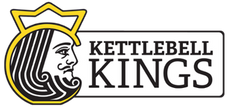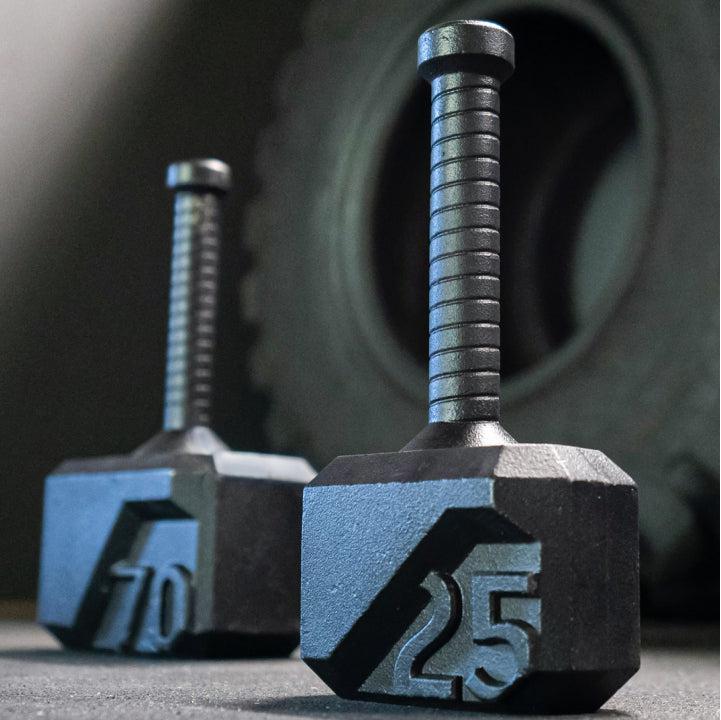By Phil McDougall
Embarking on the journey of kettlebell training requires a profound understanding of its fundamental principles. This guide presents the Ten Commandments, each serving as a crucial pillar for a successful and injury-free kettlebell training experience. Drawing from established practices, expert insights, and real-life experiences, let's delve into the refined commandments that shape effective kettlebell training.
Thou shalt not try to hammer a bent nail.
- Prioritizing movement ability overload lifted is paramount. Striving for strength, power, or endurance on an inefficient frame sets the stage for long-term failure and injury. Addressing movement quality ensures a solid foundation for progress.
Thou shalt not wear a lifting belt.
- Reserve the use of a lifting belt for specific circumstances, such as the GS athlete performing jerk or long cycle lifts. Harness the power of your built-in lifting belt—utilizing the diaphragm, pelvic floor, and transverse abdominus fosters greater stability and intra-abdominal pressure than any external belt can provide.
Thou shalt not shrug the shoulders.
- Understanding the source of power during ballistics (hips) and grinds (lats) is crucial. Shoulder shrugging signals a lack of expertise, but in Girevoy Sport snatch and clean technique, controlled scapula elevation is necessary.
Thou shalt explore and own all movement options.
- Purposeful execution of the strongest or most suitable movement prevents accidental actions that lead to weakness and injury. Master the kettlebell; don't let it dictate your movements.
Thou shalt have patience and train for long-term goals.
- Training with a focus on improving life at 80 underscores the importance of patience. The scarcity of time as a non-renewable resource cautions against hopping between short-term goals. Training with a singular, long-term goal enhances the overall quality of life.
Thou shalt not extend the wrist(s).
- Maintaining a neutral wrist enhances stability and power, while extended wrists signal a lack of proficiency. Embrace the correct wrist position for optimal performance.
Thou shalt not sit on a bench between sets.
- Encourage unloaded low-threshold movement between sets for a quicker recovery and increased tension and power in subsequent sets. Avoiding sedentary postures between exercises promotes overall efficiency.
Thou shalt not isolate muscle groups.
- Perform all kettlebell exercises in various positions—standing, kneeling, lying, or sitting on the floor. Avoid relying on external apparatus for isolation, promoting a unified approach for real-world strength.
Thou shalt pick up and park the kettlebell with intention.
- Mindful handling of the kettlebell during pickups and put-downs instills good habits, preventing real-life mishaps. Prioritize focused movements for a safer and more effective training experience.
The Requirement for Kettlebell Training
Kettlebell training is a dynamic and efficient approach to fitness, offering a fusion of strength, cardiovascular conditioning, and flexibility. The compact design of kettlebells enables a diverse range of movements that engage multiple muscle groups simultaneously, creating a holistic workout experience. The benefits extend beyond physical aspects, incorporating elements of mental focus, stability, and functional strength applicable to daily activities.
Preparation for Kettlebell Training
Before engaging in kettlebell exercises, a thorough warm-up is essential. Incorporating dynamic stretches, joint mobilization, and light cardiovascular activity prepares the body for the demands of kettlebell movements, reducing the risk of injury. Ensuring a stable workout surface and wearing appropriate footwear further enhance safety during exercises. Proper instruction, whether through certified trainers or reputable instructional materials, is crucial for beginners to grasp the fundamentals and avoid common mistakes.
Types of Kettlebell Training
Kettlebell training offers a diverse range of exercises and workout styles that cater to various fitness goals. Here are some popular types of kettlebell training:
Swing Training
The kettlebell swing is a foundational exercise that involves a powerful hip hinge to propel the kettlebell forward. It targets the posterior chain, including the glutes, hamstrings, and lower back.
- Benefits: Builds explosive hip power, improves cardiovascular fitness, and enhances overall strength.
Turkish Get-Up (TGU)
TGU is complex movement that involves transitioning from lying down to standing while holding a kettlebell overhead. It engages multiple muscle groups, emphasizing stability and control.
- Benefits: Enhances core strength, stability, and functional movement patterns.
Kettlebell Snatch
This exercise Involves lifting the kettlebell from the ground to an overhead position in one swift motion. It combines strength and cardiovascular elements.
- Benefits: Develops power, coordination, and endurance.
Kettlebell Press
Kettlebell Press consists of lifting the kettlebell to the shoulder (clean) and then pressing it overhead. It targets the shoulders, core, and lower body.
- Benefits: Strengthens the upper body and improves shoulder stability.
Single-Leg Exercises
Various exercises, such as single-leg deadlifts or lunges, performed with a kettlebell. These enhance balance, stability, and unilateral strength.
- Benefits: Targets individual leg strength, improves balance, and reduces muscle imbalances.
Experimenting with different types of kettlebell training allows individuals to tailor their workouts to specific goals, whether it's building strength, improving endurance, or enhancing overall functional fitness. Incorporating a variety of exercises ensures a well-rounded and engaging kettlebell training experience.
Benefits and Muscles Engaged
Engaging in kettlebell training activates a spectrum of muscle groups, including the core, glutes, hamstrings, shoulders, and back. Research from the American Council on Exercise (ACE) underscores the effectiveness of kettlebell workouts in calorie burning and improving aerobic capacity. The swinging, lifting, and snatching movements not only promote muscular strength but also activate stabilizing muscles, contributing to a well-rounded fitness profile.
Who Should Do Kettlebell Training
Kettlebell training is adaptable, making it suitable for individuals of varying fitness levels. Whether you're a beginner or an experienced athlete, the versatility of kettlebells allows for tailored workouts. For beginners, starting with lighter weights and focusing on mastering proper form is paramount before progressing to heavier loads. The efficiency of kettlebell training makes it a valuable addition to the routines of those seeking time-efficient yet effective workouts.
Frequently Asked Questions (FAQs) about Kettlebell Training
Q: Can kettlebell training replace traditional weightlifting?
A: While kettlebell training offers a unique set of benefits, it is more apt as a complement to traditional weightlifting rather than a complete replacement. The two modalities can be integrated to achieve a well-rounded fitness routine.
Q: Are kettlebell workouts suitable for individuals with pre-existing injuries?
A: Kettlebell exercises can be adapted to accommodate various injuries. However, individuals with pre-existing conditions should consult healthcare professionals or certified trainers to determine the appropriateness of specific movements.
Q: How often should one engage in kettlebell training for optimal results?
A: The frequency of kettlebell training depends on individual fitness goals. Typically, 2-3 sessions per week, incorporating both strength and cardiovascular exercises, are recommended for optimal results.
References
[1] American Council on Exercise (ACE). "Kettlebells: Twice the Results in Half the Time?" Retrieved from ACE Fitness
https://www.acefitness.org/resources/pros/expert-articles/2982/kettlebells-twice-the-results-in-half-the-time/
Conclusion
Incorporating the Ten Commandments of Kettlebell Training into your fitness regimen not only ensures a safer and more effective training experience but also fosters a sense of community and shared success. Whether you're a fitness enthusiast, athlete, or someone seeking a time-efficient workout solution, kettlebell training holds the potential for transformative results and a well-rounded approach to physical fitness.
Thou shalt be considerate and respectful towards others. Re-rack your kettlebell(s) after use and clean if necessary. If others wish to carry out techniques or lifts that you don’t approve of, be ready to offer advice—if requested. Otherwise, don’t worry. Be happy.
These golden rules apply to all forms of kettlebell training (and most other modalities). I’d also suggest going barefoot whenever possible to improve your movement maps, foot strength and connection with the ground, required for stronger lifts.
Strength and honor!
Phil McDougall
PHIL MCDOUGALL
Kettlebell Kings has the most highly & frequently reviewed kettlebells in the world. We have free shipping in the US & Canada (www.kettlebellkings.com), Europe (www.kettlebellkings.eu). Check out our 4,000 reviews for quality and customer service








